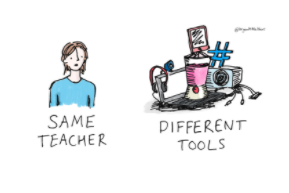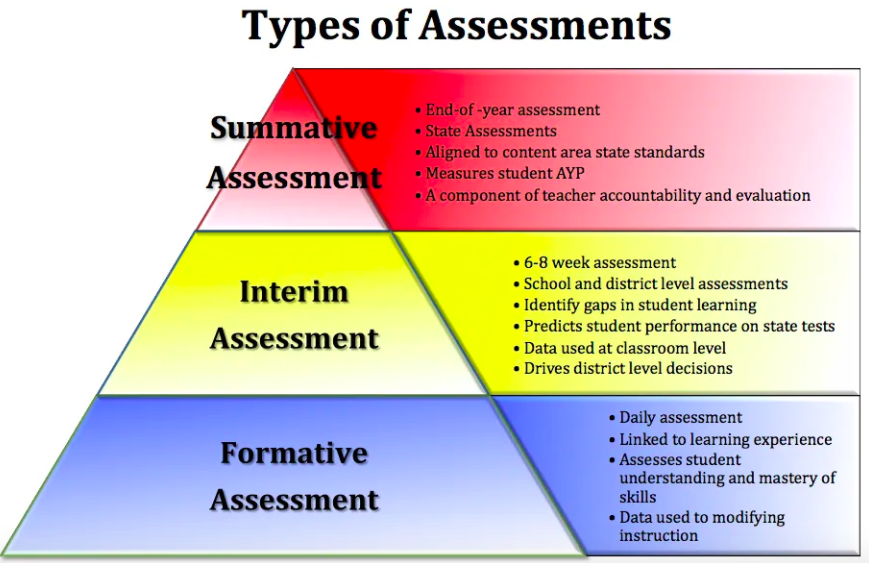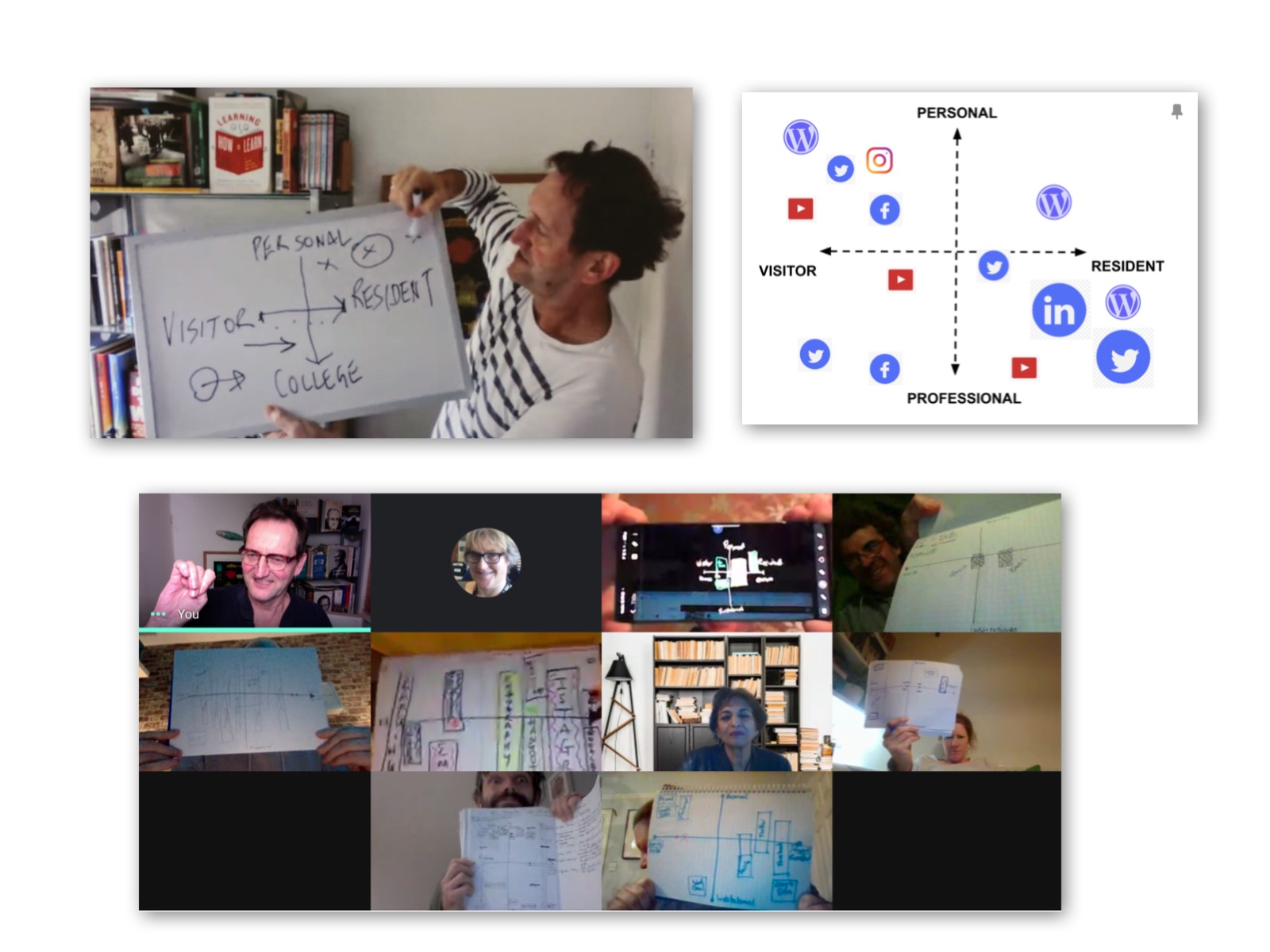
I was in a hurry. There is 24 hours of content. I got through it in 9 day: two weekends and bits during a 2020 lockdown week when I had nowhere to go.
This is how I got on with 'Take Your Teaching Online'.

Types of Assessment. This was NOT part of 'Take Your Teaching Online' but I graphic from edulastic. I am trying to embed assessment types into my
practice. I suppose the ultimate test is the job succcess at the end? Which is all they had, pass or fail, at the end of the School of Communication Arts' course I did.
Learning Design
The learning design is a combination of a little bit of reading, a little bit of watching video, a few activities where you gather your thoughts about something you have just been introduced to and then a number of formative and summative quizzes. By
the end, the collection of views you have expressed should build into a coherent and personal point of view. Around the middle the summative quiz grade counts towards your end of course ‘badge’.
This is in part a taster for the Open University's own Master of Arts : Open & Distance Education - for me ‘Taking Your Teaching Online’ was an invaluable and timely opportunity to revisit
the MAODE that I did 10 years ago (2010 to 2013). I’ve always had the MAODE at my fingertips over the passing years as at the time, invited to keep a reflective student blog, I did so every step of the way. This allows me to return to what I studied
then. Boy, have my views matured and bedded down in this time! At last been closely complemented, even integrated into my daily experience first as a learning technologist in a large FE/HE college but now as a ‘front line’ teacher undertaking a two
year, part-time PGCE. Periods of Covid-19 lockdown or departmental lockdown have harried things along. Most recently, keeping teaching to a class or two one day a week, with five classes of 20+ students each put into isolation I stepped up to run
six online classes. If anyone knows the tech I should; yet do I? I feel like the swimming teacher or coach who doesn’t swim (there are plenty of those). Or the music teacher who doesn’t play an instrument. Is that possible. The timing is right. I
did my first ‘micro-teach’ to my fellow PGCE students a few weeks ago. I am on Module 3 of the PGCE and completing the first term of six. Time to take the plunge.
Does it help or hinder that I have already run sixteen talks or workshops on staff CPD days. Staff and students are very different. For the most part staff will have their cameras on, will speak up and take part. In contrast the students, 17 years olds,
will only put on their cameras by accident and will only speak if there is a problem.
Plenty went wrong. With tech you learn to ride out most problems. Some things worked. I learnt plenty of lessons reinforced by the reading. Taking a class online is a different beast: they are in their domain not yours; if not engaged they can just as
easily log on and then go and watch TV or play a game - many could be ‘second screening’ (should I ask next time?). Their access to kit is mixed: some on laptops, most on phones. Are any on a desktop? And where do they find the space to take part
in this? Bedroom, sitting room, kitchen table, the back of dad’s car, the garden shed or back in college?
I do the course ‘Take Your Teaching Online’ out of personal need, to support colleagues, out of intellectual curiosity and for pleasure. I will take it again, build on my notes, follow up some of the references and find a way to pass on my tester/proofreader
notes to the Open University (some links are broken, videos on YouTube are not there and a few of the multiple choice questions are a nonsense).
It also provides me with the shape of designing a series of classes over a period of time that builds into a module - something I have done repeatedly for the last seven years ever since I completed the MAODE and had ‘Learning Design’ or ‘Instructional
Design’ in mind as a career move.
The eight modules are set out quite straightforwardly of topics that cover.
Take your Teaching Online : Open Learn
|
Week
|
Learning objectives
|
|
1
|
Discuss the main characteristics of online education activities and how these differ from face-to-face teaching
Begin to determine the kinds of face-to-face teaching activities that might, or might not, transfer successfully to an online environment
Summarise the elements of online teaching that need a different skill set to face-to-face teaching.
|
|
2
|
Understand some of the essential principles of online teaching
Be aware of some key learning theories and classifications of online teaching technologies
Understand the concept of learning objects and some of the different classifications of these.
|
|
3
|
Describe some of the ways to categorise educational technologies for online teaching
Explain how some of the tools available might help with certain learning objectives
start making informed decisions about which tools you might try in your own context.
|
|
4
|
Understand the benefits of networks to the online teacher
Discuss the concepts of communities of practice and network weather
Develop useful online networks to augment your teaching practice.
|
|
5
|
Define Open Educational Resources and list some examples of what this term covers.
Understand Creative Commons licences and use these properly
Search OER Repositories and the wider internet for material that you can legally reuse in your teaching
|
|
6
|
Define assistive technology and list a variety of examples
Understand how to make most of your online teaching materials accessible
Assess the accessibility of OERs
Understand what alternative formats may be needed in online teaching.
|
|
7
|
Explain the concept of technological determinism
Use the Visitors and Residents model to assess your students’ approach to technology in learning
Make changes to teaching with technologies in a systematic and informed way.
|
|
8
|
Understand how learning analytics can be used to evaluate learners’ behaviour
be able to gather and understand student feedback
Apply some strategies for embedding reflection in your online teaching
Plan an action research project for scholarship that seeks to improve your online teaching.
|
I found that the modules could indeed take two hours, and one or two more like an hour and a quarter hour and a half. Perhaps that's because I was familiar with the subject matter already. My methodology might help. I’ve learnt how to pass these things.
I take notes and get screenshots all along. I’m not going to be caught when it gets the multiple-choice quiz. These notes will carry me over the line - the bar is low. The pass mark is 50%.
One or two of the modules reminded me of topics that struck me as of enormous potential value; they deserved considerably more time than the 20 minutes given to the activity. Indeed, when it came to reviewing Open Educational Resources I took the best
part of 8 hours - that was my Saturday, with my notes completed on Sunday morning. It was worthwhile. As a review of these resources it is still ‘lite’ but it’s a start.
See > Open Education Resource Institutions and Repositories, Sun 5 December 2020 in this blog.
What I relish looking at, extracting and reworking are entire course plans and individual lessons plans, as well as interesting ‘education ready’ videos and eBooks.
There's so much to tap into if you have the time to do this kind of research. I stumbled upon an excellent OER from the Hewlett foundation, the Africa Open Educational Resources. It’s subject matter draws on the vast continent of Africa - which makes
a refreshing change from the historic gravitation to Western Europe and North America, but it doesn't change the fact that the courses are still all about women's rights, teaching employability, careers, well-being and so on.
It's refreshing to see a different take on things, to begin to get a global view.
In the Town Council I got behind Black History month and can see that there are a lot more resources and ideas here.
FOOTNOTES
1) The goal of formative assessment is to monitor student learning to provide ongoing feedback that can be used by instructors to improve their teaching and by students to improve their learning. More specifically, formative assessments: help students identify their strengths and weaknesses and target areas that need work.
2) The goal of summative assessment is to evaluate student learning at the end of an instructional unit by comparing it against some standard or benchmark. Summative assessments are often high stakes, which means that they have a high point value.
3) The Postgraduate Certificate in Education, commonly known as the PGCE, is one of the most popular academic qualifications for teaching. Offered in England, Wales and Northern Ireland, PGCEs are designed to enhance and increase academic training, preparing students for life as a teacher.
4) Continuing Professional Development (CPD) is a combination of approaches, ideas and techniques that will help you manage your own learning and growth.
